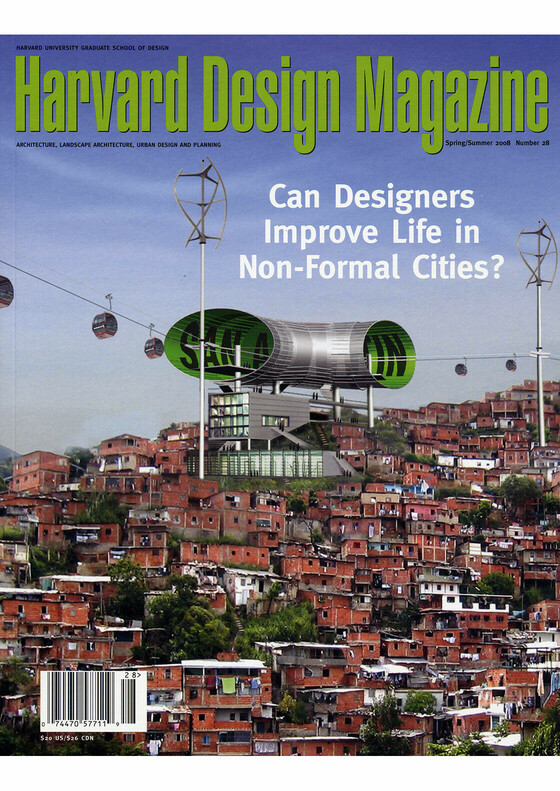Improving Informal Settlements: Ideas from Latin America
28: Can Designers Improve Life in Non-Formal Cities?

America’s design culture has shifted toward efforts to improve social and environmental conditions. Helping the disadvantaged entails risks of top-down power relationships and the ignorance of outsiders. To avoid this, designers in this issue have worked at small scales in collaboration with the people affected by their projects. The need for attention to the urban poor is increasing drastically with both relentless Third World urbanization and a lack of adequate land and housing for the one-billion additional slum dwellers projected to exist by 2020.
Thomas Spector
John Beardsley
Timothy Love
Robert Levit
John Beardsley
Jeffrey Kipnis
Christian Werthmann
John Beardsley
Myev Rees, Peter W. Williams
Christian Werthmann, John Beardsley
Ellen Dunham-Jones, June Williamson
Maria Lúcia (Lu) Peterson
Enrique Martin-Moreno C.
John Gendall
John Beardsley
Christian Werthmann
Sylvia Lavin
Daniela Fabricius
Matthew J. Kiefer
Tito Alegría
John Beardsley
David Gouverneur, Oscar Grauer
James Holston, Teresa Pires do Rio Caldeira
Keller Easterling
Joan Ockman
Daniel Naegele
Thomas Bender
Daniel Naegele
Daniel Willis
John Dixon Hunt